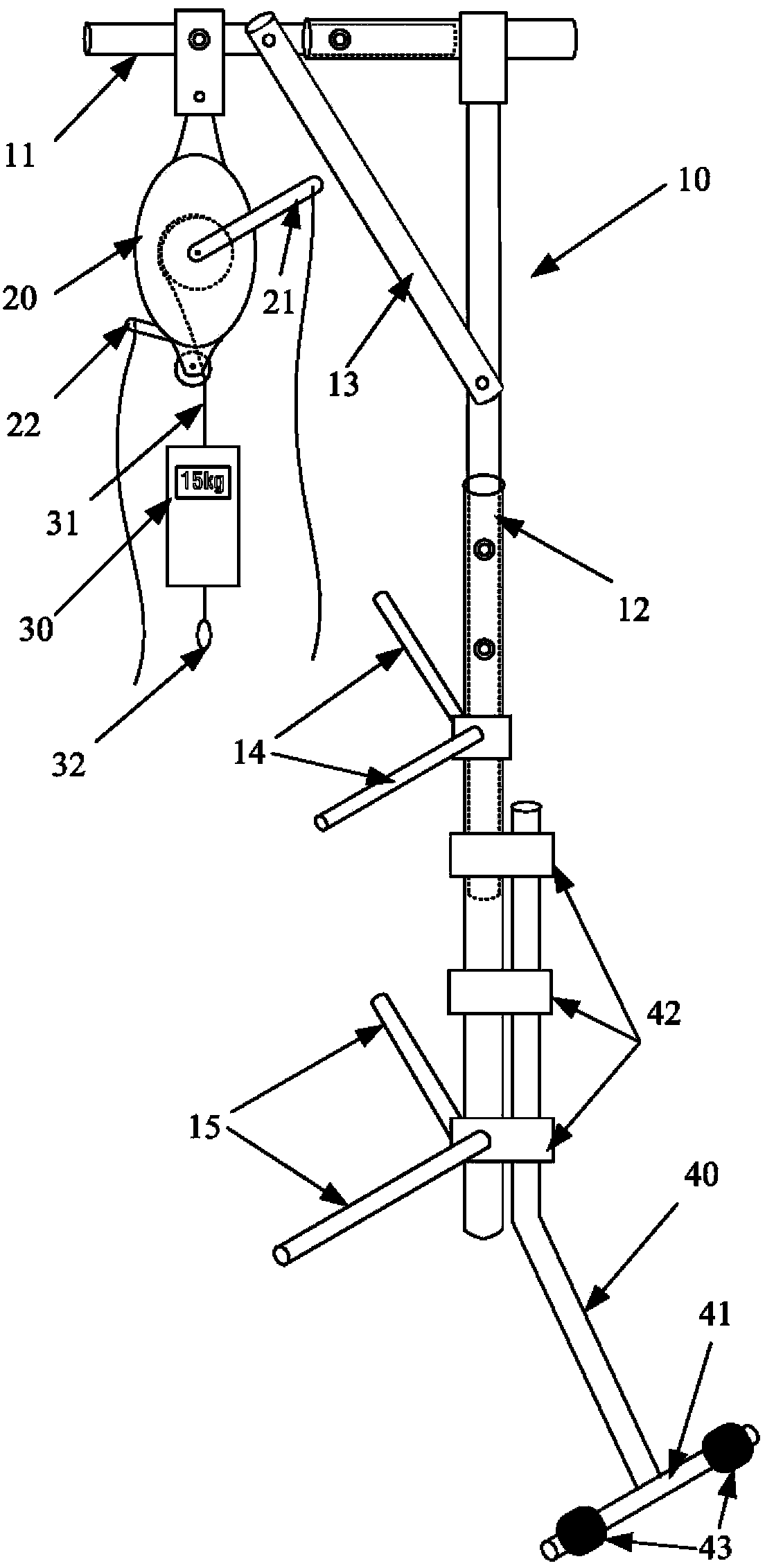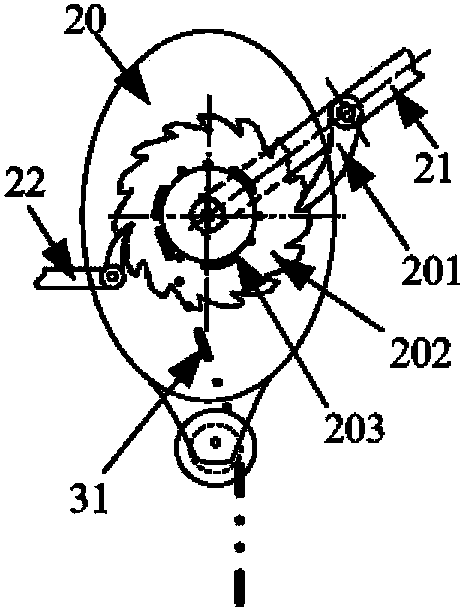Spinal deformity sitting-position traction device without counter weight and with traction force visualized
A spinal deformity and traction device technology, applied in passive exercise equipment, physical therapy, etc., can solve problems such as unfavorable patients' free movement, heavy hammer falling, and lack of safety, so as to reduce fear, prevent wheelchairs from tilting backwards, and improve active effect
- Summary
- Abstract
- Description
- Claims
- Application Information
AI Technical Summary
Problems solved by technology
Method used
Image
Examples
Embodiment
[0034]During sitting traction, the wheelchair 60 can be fixed with a braking device, and the patient sits on the wheelchair 60 .
[0035] First, the cranial ring 50 is installed for the patient with spinal deformity, and the cranial ring 50 is connected to the lower traction belt 32 at the lower end of the electronic tension meter 30 .
[0036] Then, the pawl swing lever 21 is pulled, and the upper traction belt 31 is gradually tightened. The amount of traction force is determined according to the weight of the patient, and the reading of the electronic tension meter 30 is observed until the predetermined traction force is reached, so that the traction can be played by the patient's own body weight. If the traction force is too large, the pull rod of the stop pawl 22 can be pulled to release the upper traction belt 31 .
[0037] The anti-backward tilting device 40 at the rear of the wheelchair 60 plays a role of preventing backward tilting during the pulling process, which ca...
PUM
 Login to View More
Login to View More Abstract
Description
Claims
Application Information
 Login to View More
Login to View More - R&D
- Intellectual Property
- Life Sciences
- Materials
- Tech Scout
- Unparalleled Data Quality
- Higher Quality Content
- 60% Fewer Hallucinations
Browse by: Latest US Patents, China's latest patents, Technical Efficacy Thesaurus, Application Domain, Technology Topic, Popular Technical Reports.
© 2025 PatSnap. All rights reserved.Legal|Privacy policy|Modern Slavery Act Transparency Statement|Sitemap|About US| Contact US: help@patsnap.com



